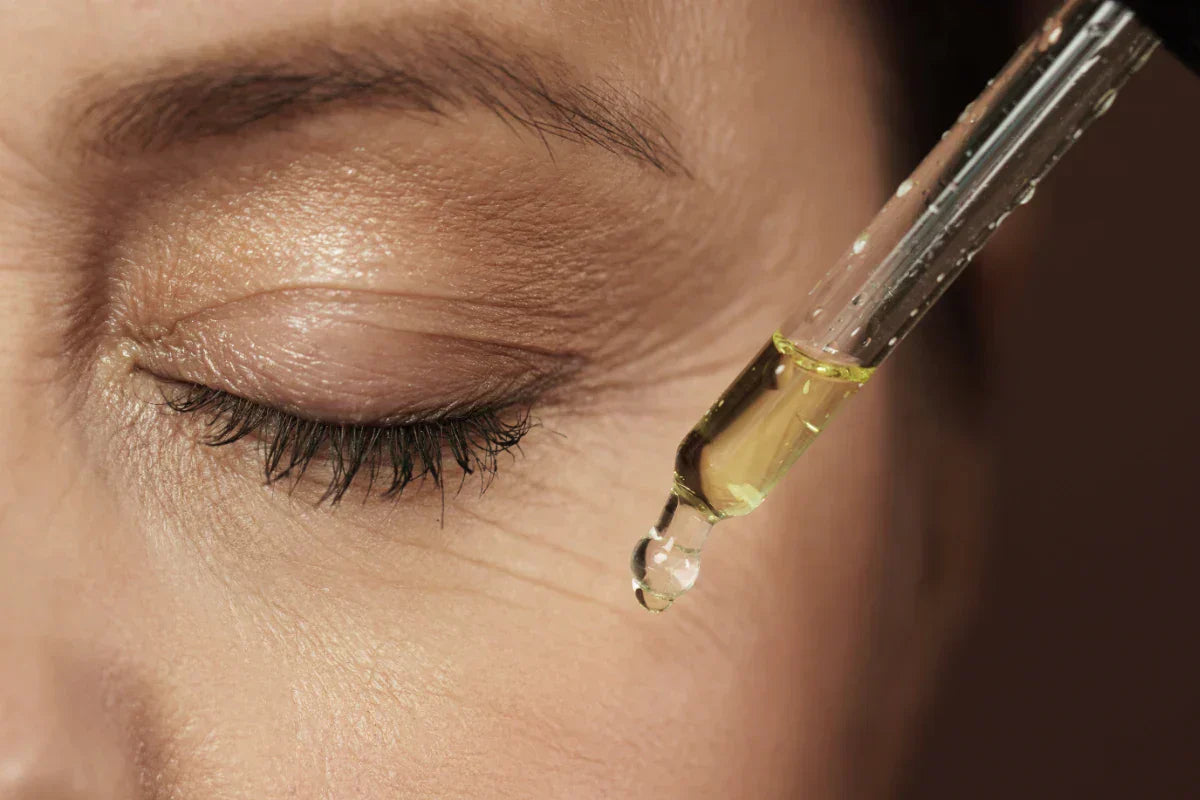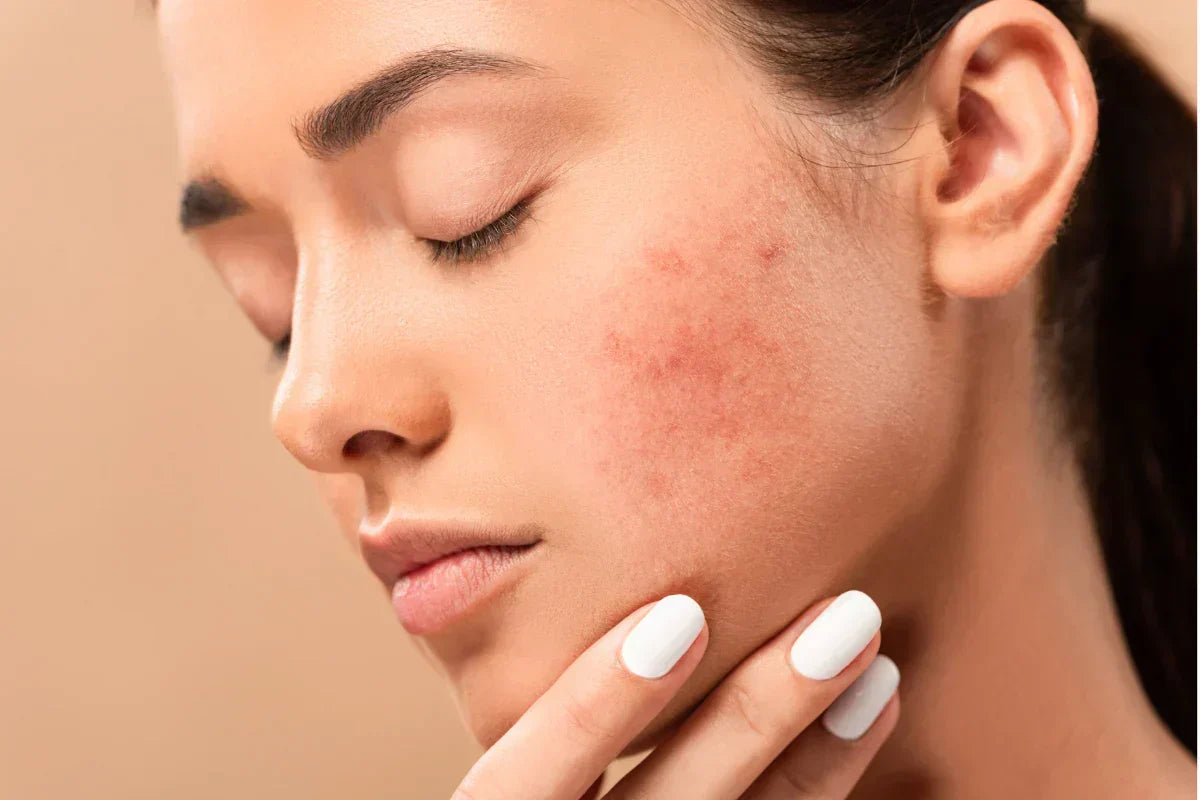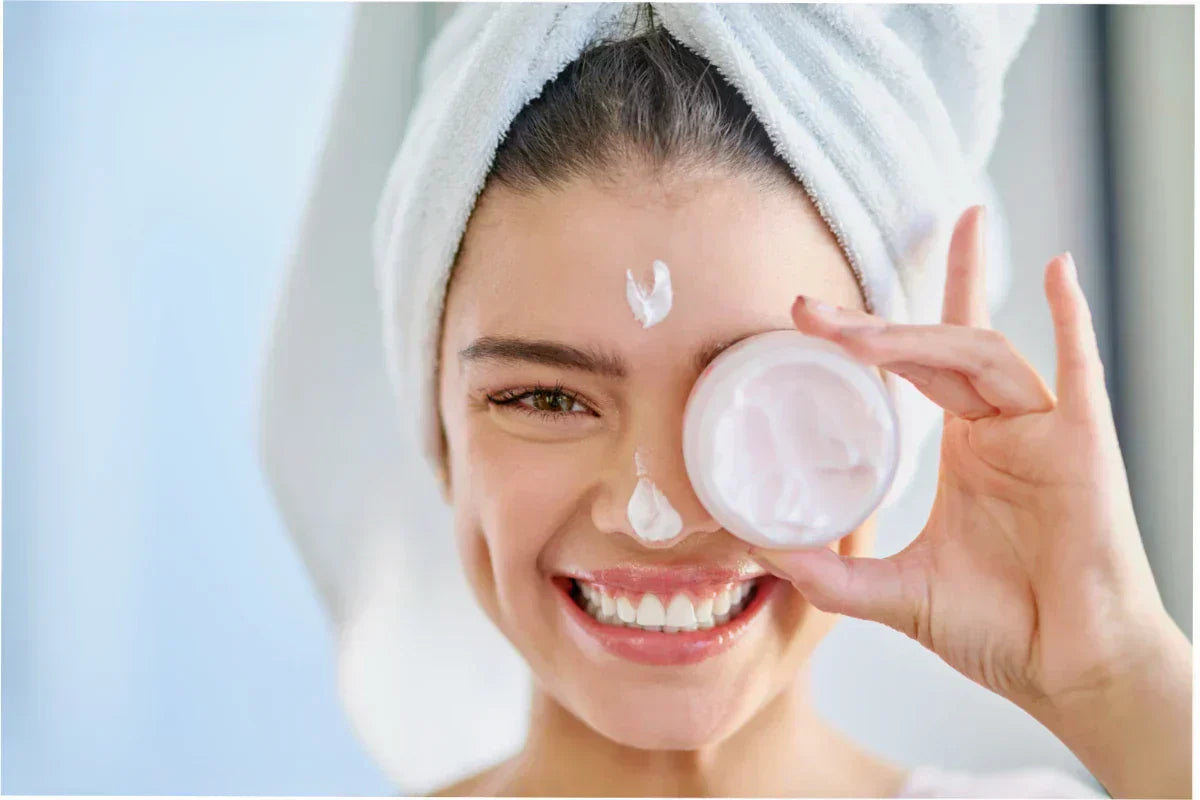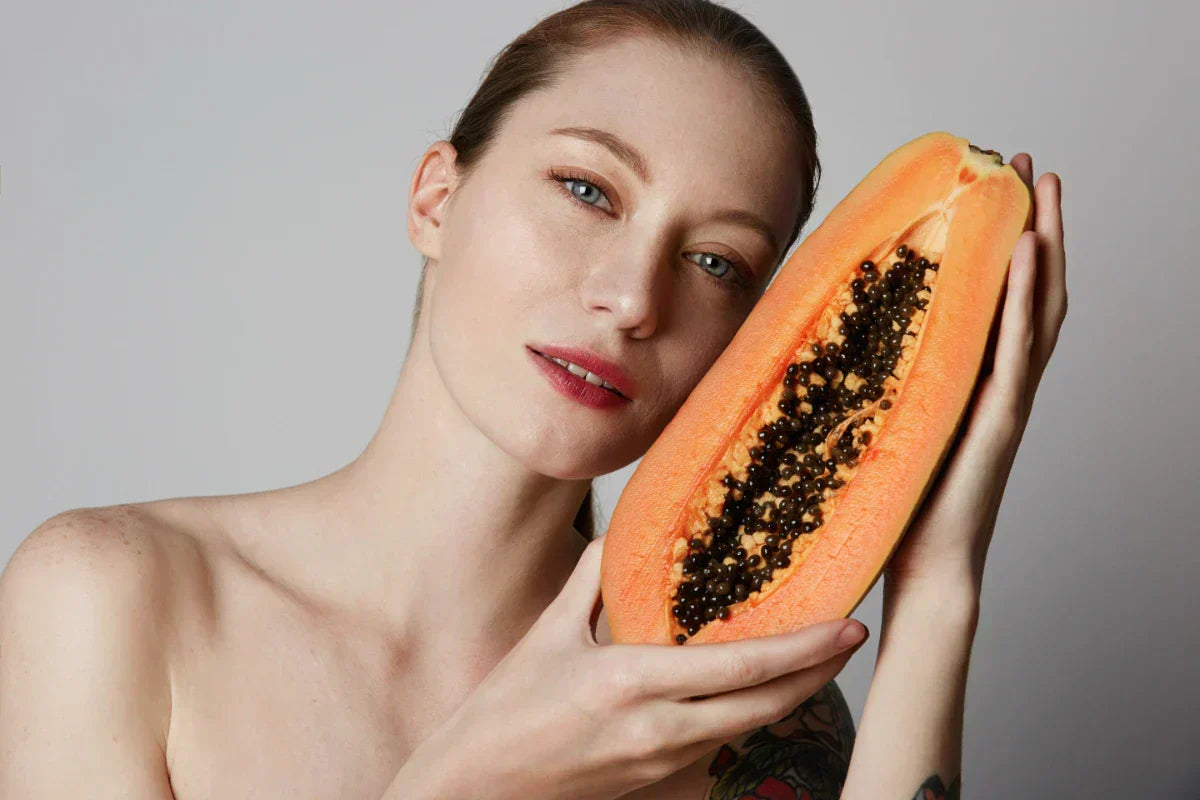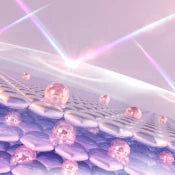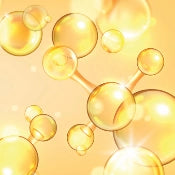While millions swear by biotin supplements for hair growth, cutting-edge research reveals a superior alternative that’s changing the game entirely. Enter biotinoyl, a scientifically enhanced form of biotin that delivers dramatically improved results for hair density, skin health, and overall follicular function. Recent clinical studies show that biotinoyl can increase hair density by up to 34% in just 12 weeks, significantly outperforming traditional biotin supplements.
This breakthrough represents more than just another hair care trend; it’s a fundamental advancement in how we approach follicular health and stimulating hair growth. In this comprehensive guide, we’ll explore the science behind biotinoyl, examine its superior bioavailability, and help you understand why leading hair care brands are rapidly incorporating this innovative compound into their premium formulations.
What is Biotinoyl and How Does It Work?
Biotinoyl represents a sophisticated modification of biotin (vitamin B7) that addresses the fundamental limitations of traditional biotin supplementation. The most prevalent form, biotinoyl tripeptide-1, combines biotin with a specific amino acid sequence, glycyl-L-histidyl-L-lysine (GHK), creating a molecule that penetrates hair follicles and dermal layers with unprecedented efficiency. The peptide portion of biotinoyl tripeptide-1 consists of short chains of amino acids, which are the building blocks of proteins such as keratin and collagen, both of which are essential for hair strength, growth, and repair.
This structural enhancement isn’t merely cosmetic. The peptide linkage increases the molecular weight from biotin’s 244.3 g/mol to approximately 566.7 g/mol, fundamentally altering how the body processes and utilizes this essential nutrient. The result is enhanced stability, improved solubility, and resistance to enzymatic degradation that typically breaks down standard biotin before it reaches hair roots.
Biotinoyl’s effectiveness in supporting terminal hair development can also vary depending on the type of hair, such as vellus or terminal hairs, which are influenced by factors like age and sex. The cross-section of hair strands, whether round or more oval, plays a key role in determining if hair is straight, curly, or curlier. Round cross sections typically produce straight hair, while oval or more irregular cross sections result in curly or curlier hair. Biotinoyl’s effects may be observed across these different hair types.
Enhanced Bioavailability and Cellular Targeting
The peptide portion of biotinoyl serves as a biological transport system, allowing the biotin component to bypass typical absorption barriers. Research demonstrates that biotinoyl exhibits 3-5 times higher bioavailability in dermal and follicular layers compared to unmodified biotin, depending on the formulation base and concentration.
This enhanced penetration directly impacts hair follicle function at the cellular level. While regular biotin struggles to reach the hair bulb where new hair formation occurs, biotinoyl effectively delivers its payload to the matrix cells responsible for hair shaft production and terminal hair development.
Molecular Structure Advantages
The chemical conjugation in biotinoyl creates several distinct advantages over traditional biotin:
- pH Stability: Functions effectively across a broader range of pH environments, from acidic shampoos to alkaline conditioners
- Sustained Release: Acts as a depot system, providing prolonged biological activity for up to 12 hours versus 2-4 hours for standard biotin
- Targeted Delivery: The GHK peptide sequence specifically signals to hair follicle stem cells and dermal repair mechanisms

The Science Behind Biotinoyl in Hair Growth and Health
Understanding how biotinoyl influences the hair growth cycle requires examining its multi-faceted approach to follicular health. The hair growth cycle consists of three main phases: the growth phase (anagen), where hair actively grows; the catagen phase, a short transitional stage when hair stops growing and prepares for shedding; and the resting phase (telogen), during which hair follicles are inactive before shedding and restarting the cycle.
Each of these phases plays a crucial role in the overall development of hair. Unlike single-mechanism treatments, biotinoyl addresses several key pathways simultaneously, creating a synergistic effect that promotes both immediate improvements and long-term hair health. Biotinoyl's multi-pathway approach helps reduce hair loss by supporting follicle health and optimizing the hair growth cycle.
Keratin Synthesis and Protein Production
At the molecular level, biotinoyl enhances keratin synthesis, the fundamental building block of hair structure. The biotin component serves as a coenzyme in carboxylation reactions critical to amino acid metabolism, while the peptide portion stimulates extracellular matrix production within the follicular environment.
This dual action results in stronger, more resilient hair strands with improved elasticity and reduced susceptibility to breakage. Clinical observations show up to 25% reduction in hair breakage among users of biotinoyl-containing hair serums compared to those using standard biotin treatments.
Hair Growth Cycle Optimization
Biotinoyl demonstrates a remarkable ability to influence the hair growth cycle, particularly by extending the anagen phase (the active growth period) and accelerating the transition from the telogen phase (the resting phase) to active growth. Prolonging the anagen phase allows hair to grow longer and reach greater length, maximizing its growth potential. This optimization occurs through several mechanisms:
- Stimulation of hair follicle stem cells within the bulge region
- Improves blood flow and enhances blood circulation around the hair root
- Improved nutrient delivery to the hair shaft during development
- Activation of growth factors that promote cellular proliferation
- These mechanisms contribute to visibly thicker hair by increasing hair density and improving hair structure
Clinical Research and Evidence
A landmark 2022 double-blind, placebo-controlled study involving over 500 participants provided compelling evidence for the effectiveness of biotinoyl. Participants using topical biotinoyl tripeptide-1 formulations showed:
- 34% increase in hair density after 12 weeks
- Significant improvements in hair strength and thickness
- Enhanced scalp health markers
- Superior results compared to oral biotin supplementation
These findings represent direct evidence of biotinoyl’s superiority in clinical settings, particularly when compared to traditional approaches to reducing hair loss.
Biotinoyl vs. Regular Biotin: Key Differences
The distinction between biotinoyl and regular biotin extends far beyond simple molecular modifications. These differences translate into measurable improvements in real-world applications, making biotinoyl a valuable addition to modern hair care routines.
Penetration and Absorption Analysis
Dermal penetration studies reveal stark differences in how these molecules interact with hair follicles and surrounding skin tissue:
|
Factor |
Regular Biotin |
Biotinoyl Tripeptide-1 |
|---|---|---|
|
Follicular penetration rate |
Standard baseline |
2x higher absorption |
|
Duration of action |
2-4 hours |
Up to 12 hours |
|
pH stability range |
Limited |
Broad spectrum |
|
Resistance to degradation |
Low |
High |
Bioavailability in Follicular Environments
The peptide-mediated transport system in biotinoyl allows for preferential uptake by hair follicle cells. This targeted delivery enables lower concentrations of biotinoyl to achieve superior results compared to higher doses of regular biotin, thereby reducing the risk of potential side effects while maximizing therapeutic benefits.

Molecular Formula Considerations
The enhanced molecular formula of biotinoyl creates unique advantages in cosmetic products and hair treatments. The increased polarity and structural stability allow formulators to create more effective delivery systems, from lightweight serums to rich conditioning treatments.
Biotinoyl Benefits for Hair Care
The practical benefits of incorporating biotinoyl into your hair care routine extend across multiple aspects of hair health, from strengthening existing strands to promoting new hair growth and improving overall scalp health. Biotinoyl is now a key ingredient in many advanced hair care products, where it is combined with other beneficial ingredients to support hair growth, scalp health, and hair strength. These benefits contribute to healthier hair overall.
Enhanced Hair Density and Thickness
Clinical trials consistently demonstrate biotinoyl’s ability to increase hair density through multiple pathways. Beyond simply promoting new hair growth, biotinoyl helps convert vellus hair (fine, barely visible strands) into terminal hairs with greater diameter and pigmentation. Users typically observe:
- Increased hair count per square centimeter of scalp
- Thicker individual hair strands
- Improved hair volume and fullness
- Enhanced coverage in areas of thinning hair
Strengthening Hair Structure
The amino acids provided by biotinoyl’s peptide component serve as building blocks for protein synthesis within the hair shaft. This process strengthens hair from root to tip, creating more resilient hair that better withstands daily stressors, such as brushing, styling, and environmental exposure.
Follicle Revitalization
Perhaps most importantly, biotinoyl addresses the underlying health of hair follicles themselves. By improving blood flow to the scalp and enhancing nutrient delivery to follicular cells, biotinoyl helps maintain the productive capacity of each follicle throughout its natural cycle.
How Biotinoyl Strengthens Hair from Root to Tip
The comprehensive strengthening effects of biotinoyl result from its ability to influence hair structure at multiple levels, from the deepest follicular cells to the visible hair shaft.
Cellular Repair Mechanisms
At the follicular level, biotinoyl activates several repair and regeneration pathways:
- Matrix Cell Stimulation: Enhanced proliferation of cells responsible for hair shaft formation
- Protein Cross-linking: Improved structural integrity within the hair cortex
- Antioxidant Protection: Reduced oxidative stress that can damage follicular DNA
- Stem Cell Activation: Stimulation of follicular stem cells that maintain long-term hair production capacity
Moisture Retention and Environmental Protection
The peptide components in biotinoyl help maintain optimal hydration levels within the hair shaft, preventing the dryness and brittleness that often accompany chemical treatments or environmental exposure. This moisture retention is particularly beneficial for individuals with damaged hair or those frequently exposed to UV rays.
Structural Protein Enhancement
By supporting the production of key structural proteins like keratin and collagen, biotinoyl helps maintain the integrity of both the hair shaft and the surrounding follicular environment. This dual benefit ensures that new hair grows stronger while existing hair maintains its health and appearance.
Biotinoyl in Skin Care Applications
While hair care remains the primary application for biotinoyl, its benefits extend significantly into skin rejuvenation and overall dermal health. The same mechanisms that promote hair growth also contribute to enhanced skin elasticity and cellular renewal. Additionally, these mechanisms are effective in improving scalp health by promoting circulation, reducing inflammation, and strengthening hair follicles, which supports a comprehensive approach to improve scalp health and encourages healthy hair growth.
Collagen Production and Anti-Aging Benefits
The GHK peptide portion of biotinoyl tripeptide-1 stimulates collagen production in dermal fibroblasts, resulting in improved skin firmness and a reduced appearance of fine lines. Clinical studies report measurable improvements in skin elasticity after 8-12 weeks of consistent use.
Enhanced Cellular Regeneration
Biotinoyl supports the natural cellular turnover process, helping to replace damaged skin cells with healthy new tissue. This regenerative effect contributes to improved skin texture, reduced age-related changes, and enhanced overall skin health.
Nail Strength and Growth
Beyond hair and skin applications, biotinoyl demonstrates effectiveness in strengthening nail structure and promoting healthy growth. The same keratin-enhancing properties that benefit hair also improve nail resilience and reduce brittleness.
Best Biotinoyl Products and Formulations
The growing recognition of biotinoyl’s benefits has led to an expansion of available products across multiple categories and price points. Many peptide products now feature biotinoyl as a key ingredient, offering enhanced benefits for hair growth and protection. Biotinoyl is available in various forms, including serums, shampoos, and conditioners, allowing consumers to choose the best option for their hair care routine. Understanding the various formulations and forms enables consumers to select the most suitable option for their specific needs and hair types.
Professional-Grade Serums
High-concentration biotinoyl serums typically contain 1-2% active ingredient and represent the most potent treatment option. Leading brands like Viviscal and Nutrafol have introduced targeted formulations that combine biotinoyl with complementary ingredients:
- Copper peptides for enhanced angiogenesis and improved blood circulation
- Panthenol (vitamin B5) for additional moisture and scalp conditioning
- Hyaluronic acid for hydration and delivery enhancement
- Plant extracts providing anti-inflammatory and antioxidant support
Daily Use Products
For routine maintenance and prevention, lower-concentration formulations offer consistent benefits without the intensity of treatment serums:
- Biotinoyl shampoos (0.1-0.5%): Gentle daily cleansing with active benefits
- Conditioning treatments (0.2-0.8%): Deep penetration during longer contact time
- Leave-in sprays (0.1-0.3%): Convenient application for busy lifestyles

Combination Formulations
Many successful products combine biotinoyl with other scientifically proven ingredients to create synergistic effects. Popular combinations include certain peptides for enhanced signaling, antimicrobial peptides for scalp health, and collagen peptides for structural support.
How to Choose the Right Biotinoyl Product
Selecting the optimal biotinoyl formulation requires consideration of several factors, including current hair condition, treatment goals, and personal preferences for application methods. Check out the concentration Guidelines below.
Maintenance and Prevention (0.1-0.5%):
- Suitable for healthy hair seeking to prevent future issues
- Daily use of shampoos and conditioners
- Generally safe for all hair types
- Lower cost point for budget-conscious consumers
Active Treatment (0.8-1.5%):
- Appropriate for noticeable thinning hair or hair loss
- Targeted serums and intensive treatments
- Requires consistent application for optimal results
- Higher investment but faster visible improvements
Intensive Intervention (1.5-2%):
- Reserved for significant hair loss or post-treatment recovery
- Professional-grade formulations
- May require consultation with hair care specialists
- Premium pricing reflecting advanced formulation
Complementary Ingredient Considerations
The most effective biotinoyl products often include supporting ingredients that enhance absorption, provide additional benefits, or address specific hair concerns:
- For damaged hair: Look for formulations with proteins and amino acids
- For scalp issues: Choose products with anti-inflammatory botanicals
- For aging concerns: Seek combinations with antioxidants and growth factors
- For maximum penetration: Consider products with penetration enhancers
Product Format Selection
|
Format |
Best For |
Pros |
Cons |
|---|---|---|---|
|
Serums |
Targeted treatment |
High concentration, precise application |
Higher cost, potential greasiness |
|
Shampoos |
Daily maintenance |
Convenient, economical |
Lower concentration, brief contact time |
|
Conditioners |
All-around care |
Moisturizing, longer contact time |
May weigh down fine hair |
|
Leave-in treatments |
Consistent dosing |
Continuous exposure, styling benefits |
Potential buildup with overuse |
Application Methods and Usage Guidelines
Maximizing the benefits of biotinoyl requires proper application techniques and consistent usage patterns. The specific approach varies depending on product format and individual hair care routines.
Optimal Application Protocols
For Scalp Serums:
- Apply to a clean, slightly damp scalp
- Part hair into sections for even distribution
- Massage gently to promote absorption and blood circulation
- Leave on without rinsing
- Style, as usual, once absorbed
For Shampoo Integration:
- Wet hair thoroughly with warm water
- Apply biotinoyl shampoo, focusing on the scalp
- Massage for 2-3 minutes to maximize contact time
- Rinse completely and follow with a compatible conditioner
- Use 3-5 times per week for best results

Timing and Frequency Recommendations
Clinical studies suggest that consistent application yields superior results compared to intermittent use. Most effective protocols involve:
- Daily application for intensive treatment phases (first 8-12 weeks)
- Every other day for maintenance phases
- Evening application to align with natural cellular repair cycles
- Consistent timing to maintain steady follicular exposure
Expected Timeline for Results
Understanding realistic expectations helps maintain consistent usage during the initial phase when benefits may not be immediately visible:
- 2-4 weeks: Initial improvements in hair texture and manageability
- 4-8 weeks: Noticeable reduction in hair breakage and shedding
- 8-12 weeks: Visible improvements in hair density and thickness
- 12-16 weeks: Maximal benefits typically achieved with continued maintenance
Clinical Studies and Research Results
The scientific foundation supporting biotinoyl’s effectiveness rests on multiple peer-reviewed studies and clinical trials conducted over the past five years. This research provides valuable insight into both efficacy and safety profiles.
Landmark Clinical Trials
The most comprehensive study, published in an international journal in 2022, established biotinoyl tripeptide-1 as a significant advancement in hair growth technology. This randomized, double-blind, placebo-controlled trial tracked 567 participants over 24 weeks, measuring multiple outcome parameters:
Primary Outcomes:
- Hair density increased by 34% in the treatment group versus 3% in placebo group
- Hair diameter measurements showed 18% improvement in thickness
- Hair strength testing revealed a 25% reduction in the breakage force required
Secondary Outcomes:
- Scalp health scores improved significantly
- User satisfaction ratings exceeded 85%
- No serious adverse reactions reported
Comparative Analysis Studies
Additional research has compared biotinoyl’s effectiveness against established treatments, such as minoxidil and finasteride. While biotinoyl showed more modest effects than these pharmaceutical interventions, it demonstrated several advantages:
- Significantly better tolerability profile
- No systemic side effects
- Suitable for both male and female participants
- Compatible with other hair care treatments
- Long-term Safety Data
Extended follow-up studies, which track participants for up to 24 months, provide reassuring safety data. The research confirms that biotinoyl maintains its effectiveness over time without developing tolerance or diminishing returns.
Side Effects and Precautions
While biotinoyl demonstrates an excellent safety profile in clinical trials, understanding potential side effects and appropriate precautions ensures safe and effective use. Some individuals may experience allergic reactions to certain ingredients in topical formulations, including herbal extracts.
Documented Adverse Reactions
Clinical trials report minimal side effects, with the most common being:
- Mild scalp irritation (reported in less than 2% of users)
- Temporary redness at application sites
- Contact dermatitis in individuals with peptide sensitivities
- These reactions typically resolve within 24-48 hours of discontinuation and rarely require medical intervention.
Risk Factors and Contraindications
Certain individuals should exercise additional caution when considering biotinoyl products:
- Known allergies to biotin or peptide compounds
- Sensitive skin conditions like eczema or dermatitis
- Concurrent use of multiple active hair treatments
- Pregnancy and breastfeeding (safety data limited)
- Safety Testing Recommendations
Before beginning any biotinoyl regimen, dermatologists recommend:
- Patch testing on a small area of skin 48 hours before full application
- Gradual introduction starting with lower concentrations
- Monitoring for reactions during the first week of use
- Professional consultation for individuals with existing scalp conditions
Future of Biotinoyl in Hair and Skin Care
The rapid advancement in biotinoyl research suggests exciting developments on the horizon, with new formulations and applications emerging from ongoing clinical trials and technological innovations. Research is also exploring the benefits of biotinoyl for specialized hair types such as eyelashes, eyebrows, facial hair, and body hair.
Next-Generation Formulations
Researchers are developing enhanced biotinoyl derivatives with improved targeting capabilities:
- Extended peptide chains for enhanced follicular binding
- Nanotechnology delivery systems for deeper penetration
- Time-release formulations for sustained action
- Combination molecules integrating multiple active ingredients
Emerging Applications
Beyond traditional hair care, biotinoyl research is expanding into new therapeutic areas:
- Alopecia areata treatment as an adjunct to conventional therapy
- Post-chemotherapy hair recovery for cancer patients
- Age-related hair changes in hormone-sensitive populations
- Eyebrow and eyelash enhancement for cosmetic applications
Market Projections and Innovation
Industry analysts predict significant growth in the biotinoyl market, with annual increases of 10-15% expected through 2025. This growth is driving innovation in:
- Advanced delivery mechanisms using lipid nanocarriers
- Personalized formulations based on genetic hair analysis
- Combination therapies integrating biotinoyl with other cutting-edge treatments
- Professional-grade applications for salon and medical use

Integration with Precision Medicine
Future developments may include genetic testing to identify individuals most likely to benefit from biotinoyl treatments, allowing for personalized hair care protocols that optimize results while minimizing unnecessary exposure.
Conclusion
Biotinoyl represents a genuine breakthrough in hair and skin care science, offering superior bioavailability, enhanced follicular targeting, and clinically proven results that surpass traditional biotin supplementation. The extensive research supporting its effectiveness, combined with its excellent safety profile, positions biotinoyl as a valuable addition to evidence-based hair care routines.
For individuals struggling with thinning hair, poor hair quality, or simply seeking to optimize their hair health, biotinoyl provides a scientifically sound solution backed by rigorous clinical testing. The variety of available formulations ensures that most people can find a suitable product that fits their lifestyle, budget, and specific hair care needs.
As research continues to unlock new applications and improved formulations, biotinoyl’s role in hair and skin care will likely expand further. For those ready to move beyond basic biotin supplementation, exploring biotinoyl-based products represents a logical next step toward achieving healthier, stronger, and more resilient hair.
Start your biotinoyl journey with patch testing and lower concentrations, gradually building up to more intensive treatments as your hair responds positively. With consistent use and realistic expectations, biotinoyl can become a cornerstone of your advanced hair care regimen, delivering the scientifically proven results that traditional approaches often fail to achieve.
Frequently Asked Questions (FAQ) on Biotinoyl Tripeptide-1
What is biotinoyl tripeptide-1, and how does it support hair growth?
Biotinoyl tripeptide-1 is a peptide-enhanced form of biotin that penetrates hair follicles deeply and boosts keratin production. It has been clinically proven to increase hair density and strength.
How does biotinoyl compare to regular biotin supplements for hair?
Biotinoyl offers superior bioavailability, deeper follicular delivery, and three to five times better results than standard biotin. It's the preferred choice in advanced hair serums and scalp treatments.
Can biotinoyl help with thinning hair and hair loss?
Yes, biotinoyl strengthens hair follicles, reduces breakage, and extends the growth (anagen) phase, making it highly effective for hair thinning and shedding.
Is biotinoyl safe for all hair types and daily use?
Biotinoyl is dermatologically safe, non-irritating, and suitable for all hair types. It's used in daily shampoos, serums, and conditioners to promote long-term hair health.
What are the best products with biotinoyl tripeptide-1?
Look for hair serums, leave-in sprays, or conditioners containing 0.5–2% biotinoyl tripeptide-1, combined with peptides, panthenol, or copper peptides, for enhanced performance.


